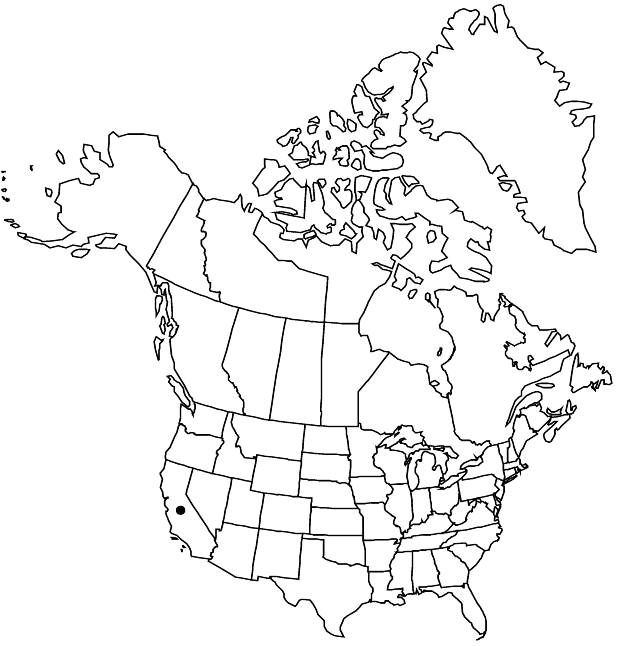Dudleya traskiae
Desert. Pl. Life 14: 153. 1942 (as traskae) ,.
Caudices to 2 dm × 1–3 cm, clumps to 5 dm diam. Leaves without resinous odor; rosette 25–40-leaved, 10–20 cm diam.; blade light green, oblong to oblong-oblanceolate, flat, usually channelled adaxially, 4–15 × 1–4 cm, 2.5–6 mm thick, 4–6 times wider than thick, base 10–40 mm wide, surfaces mostly farinose, not viscid, not oily. Inflorescences: cyme 2–3-branched, obpyramidal, (2–3 × 0.5–2 dm); branches 1–2 times bifurcate (sometimes with some scattered proximally); cincinni 7–20-flowered, somewhat circinate, 4–12 cm; floral shoots 2–5 dm × 3–8 mm; leaves 20–45, spreading to slightly ascending, triangular-ovate, 1–4 × 1–1.5 cm. Pedicels 1–3 mm. Flowers: petals ascending near base and outcurved, connate 1–2 mm, bright yellow, elliptic or narrowly ovate, 8–10.5 × 3–4 mm, apex acute, corolla 5–6 mm diam. at base and 8–15 mm at apex; pistils suberect, 7–10 mm; styles 2.5–4 mm. Follicles ascending, slightly gibbous adaxially, beaks ascending to spreading. 2n = 68.
Phenology: Flowering spring.
Habitat: Sheer cliffs and rocky slopes
Elevation: 0-100 m
Discussion
Of conservation concern.
Dudleya traskiae is endemic to Santa Barbara Island. It was once thought exterminated by feral rabbits (R. N. Philbrick 1972); the rabbits have been removed and the plants survive (R. V. Moran 1978), recovering on the slopes and in fact probably always secure on the sheer sea cliffs. According to R. Clark and W. L. Halvorson (1987), it is making a good recovery.
The campanulate corolla of Dudleya traskiae is intermediate between the prismatic or tubular corolla of subg. Dudleya and the open corolla more typical of subg. Stylophyllum and found in all the diploid species, including the most primitive. The corolla is much like those of hybrids between members of the two subgenera, and D. traskiae is tetraploid. These two facts together suggest that the species may have arisen as an amphidiploid hybrid (R. V. Moran 1978).
Selected References
None.
